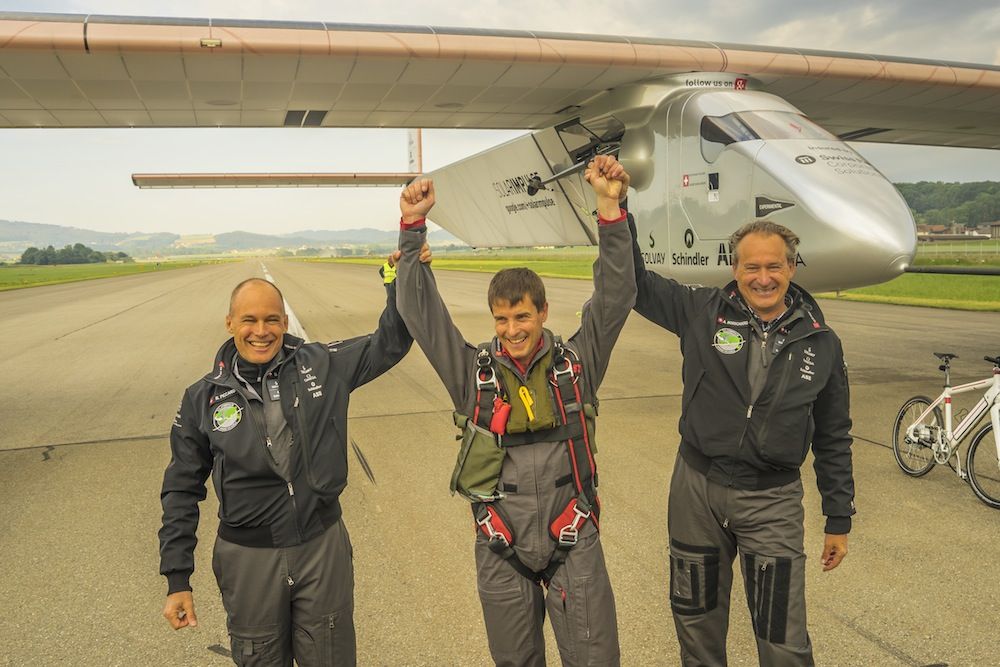Solar Plane's Route for Around-the-World Flight Revealed

In about a month, two Swiss pilots will attempt a record-setting flight around the world without using any fuel, and today (Jan. 20), they announced the route for their ambitious journey aboard their solar-powered plane, Solar Impulse 2.
Pilots André Borschberg and Bertrand Piccard will begin their slow-and-steady voyage from Abu Dhabi in the United Arab Emirates in late February or early March.
They'll stop in Muscat, Oman; the Indian cities Ahmedabad and Varanasi; Mandalay, Myanmar; and the Chinese cities Chongqing and Nanjing, according to the official route. Next, they'll touch down in Hawaii, as well as three places in the continental United States: Phoenix, a to-be-determined location in the Midwest and New York City's John F. Kennedy International Airport. Borschberg and Piccard will then cross the Atlantic and stop somewhere in southern Europe or northern Africa before returning to Abu Dhabi by late July or early August. [Images: Cross-Country Flight in a Solar-Powered Plane]
Borschberg and Piccard have been flying increasingly ambitious solar-powered missions to draw attention to the possibilities for clean energy. In the summer of 2013, the pilots made a record-setting, coast-to-coast journey across the United States, from California to New York, using their first ultralight aircraft, Solar Impulse. The plane, which had a cruising speed of about 53 mph (85 km/h), also completed a 26-hour overnight flight in 2010, and flew from Switzerland to Morocco in 2012.
Solar Impulse was the first aircraft capable of flying day and night without fuel. Its solar panels harvested energy from the sun, which could be stored in onboard batteries that allowed the plane to stay powered overnight.
The new carbon-fiber plane, Solar Impulse 2, is covered in 17,248 solar cells and has a wingspan that measures 236 feet (72 meters) across. It sports a larger cockpit than the first plane, though it can still only support one pilot at a time, which means Borschberg and Piccard will alternate flying duties for each leg.
The pilots unveiled Solar Impulse 2 in April 2014. On its debut flight in Switzerland in June 2014, the plane reached a maximum altitude of 5,500 feet (1,680 m) and flew at an average ground speed of 35 mph (55.6 km/h).
Sign up for the Live Science daily newsletter now
Get the world’s most fascinating discoveries delivered straight to your inbox.
Follow Megan Gannon on Twitter. Follow us @livescience, Facebook & Google+. Original article on Live Science.











